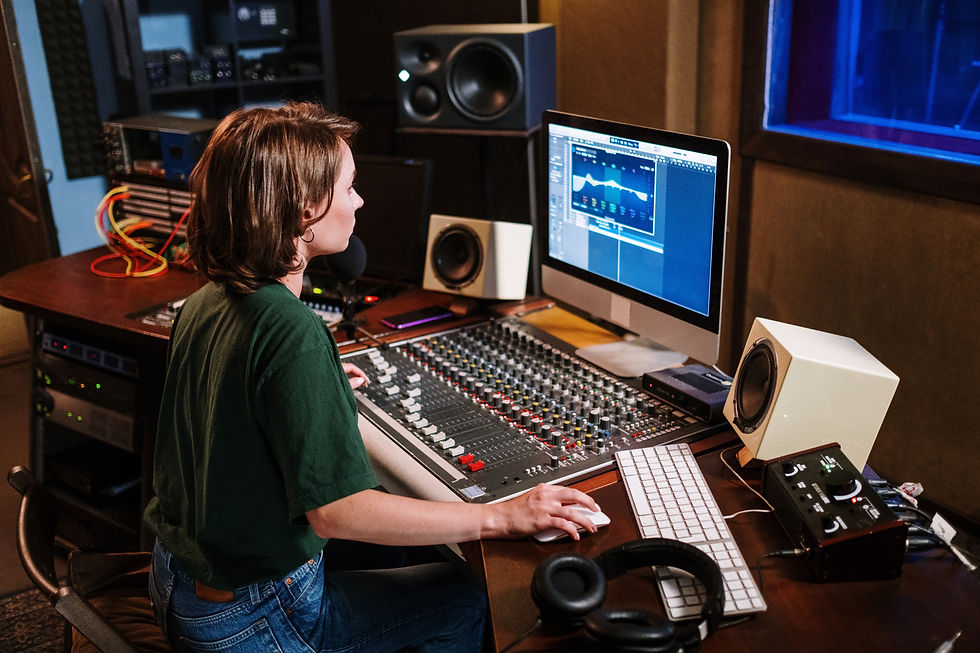5 Steps to Trouble-Free File Management in Ableton Live – Improve Your Workflow!
- DJ Terhinator

- Oct 6, 2022
- 4 min read
Updated: Oct 7, 2022
Missing files, messy live sets and an overall chaos in Ableton? Being organised while producing music equals faster workflow, less struggle and more finished projects. Start managing your files today with these helpful tips by Ableton Certified Trainer LNA.
If file management sounds dull, you’re absolutely right – it’s much more fun to make music! However, using some time for this necessary evil pays off with a smoother production workflow and peace of mind knowing that nothing gets lost in the process, even when eventually changing computers.
If you’re at the very beginning of your Ableton journey, concentrate first on getting some sounds out and familiarising yourself with the software. When you know your way in the Ableton world a bit better, it’s time to sit down and organise your files using these 5 handy tips and tricks.
Click the headlines to find respective material from the video above.

The best place to save your packs, plugins (i.e. VSTs), live sets and samples is an external hard drive. This keeps your computer empty, CPU low and files in order.
Accessing your external hard drive is very simple and can be done directly in Ableton’s browser window. First of all, name the folders on your external hard drive logically – e.g. Ableton Packs, Live Sets, Plugins and Sample Packs.
Then, make sure to set these folders as default for your Ableton Packs and Plugins. This can be done under Preferences > Library and Preferences > Plug-Ins.
Plugins and Ableton Packs can be seen in Ableton’s browser window automatically, under Categories and Places. All the other folders, whichever you want them to be, can be added under Places by clicking Add Folder.
However, it’s a wise move to leave something on your computer’s hard drive as well. This goes for everything you’re currently working on or things you need for a live performance. While going through your Preferences, you may also want to leave your Temporary Folder, Cache Folder and User Library on your computer for an easy access even without the external hard drive.
Game Changer Tip! Save your live sets by choosing File > Collect All And Save. This way you'll never have to relocate the items you used, even if you move them between folders. Also make sure to check your Preferences and see that Library > Collect Files on Export is set to Always.

Collections is the place to colour-tag your favourite sounds, samples, tools and effects, so you have them at hand whenever you need them.
There are seven colour codes available. The edit button appears when you hover your mouse over the Collections header. Tick the colours you want to use and rename them with a right-click. When you want to add something into your Collections, right-click it to open the respective window.

There are three default folders under Places in Ableton's browser window.
Packs marks your Ableton Packs – the existing ones, as well as the ones still waiting to be downloaded.
User Library is the default location for items you save yourself, e.g. clips, presets, samples and templates.
Current Project shows the tracks of the project you’re currently working on. You can easily access all the clips, devices, stems and samples of that project, but you can do the same for your non-active projects, too – just add your Live Sets folder under Places by using Add Folder as described above.

Templates are a great way of setting things up beforehand, so everything is ready when the inspiration hits. They also save you lots of time and improve your production workflow.
You can save any live set as a template by clicking File > Save Live Set As Template. It will be saved in your User Library. You can also save any template as default by right-clicking it and choosing Set Default Live Set.

Presets are another smart means of getting things rolling. Save audio effect, midi effect, instrument or drum racks by clicking the disc icon on the rack’s top right corner and voilà – your favourite racks will be saved in the User Library.

Left-clicking the Name bar in the Ableton browser window shows your sounds, drums, instruments and others in alphabetically ascending or descending order.
Right-click to find more options – you can arrange your contents e.g. by size, type and rank. It's a big help when colour-tagging your Collections or a fun way to challenge your creativity. Who knows, it may even save your project one day!

So next time you have a few extra moments, take a tour in Ableton Live and see what it holds in store for you. Be bold and click around – you, your workflow and your listeners might all be pleasantly surprised!

Photos: Andrew Neel, Andrea Piacquadio, cottonbro & mentatdgt / Pexels





















コメント